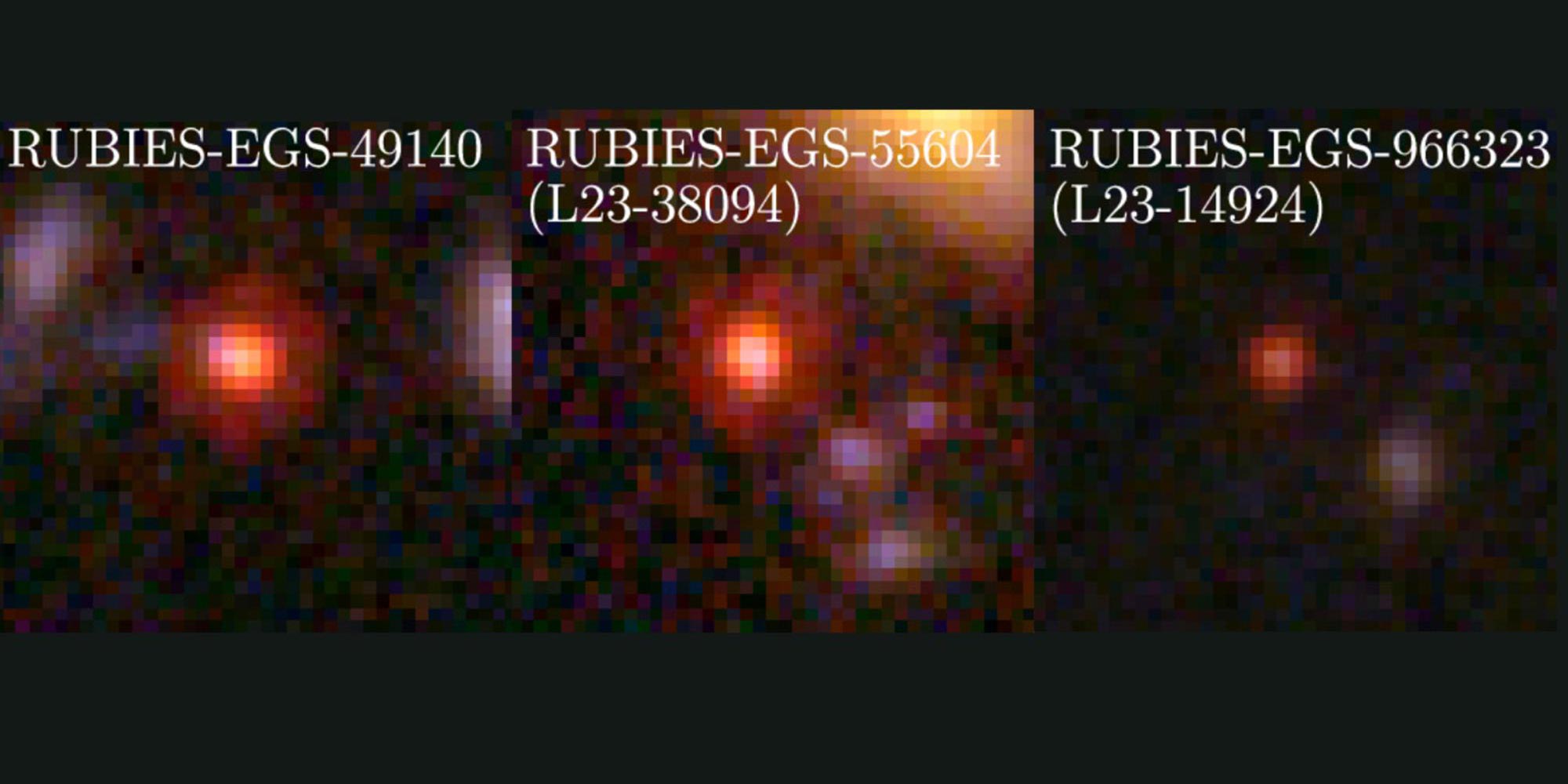Weatherman2020
Diamond Member
The Webb Telescope is finding old stars in the young universe.
Oops.
Chalk another one up to manmade computer models.
NASA’s James Webb Space Telescope (JWST) confirmed that luminous, very red objects previously detected in the early universe challenge established ideas about the origins and evolution of galaxies and their supermassive black holes.
Led by researchers from Penn State and utilizing the NIRSpec instrument on JWST as part of the RUBIES survey, the international team identified three enigmatic objects dating back to 600-800 million years after the Big Bang, a time when the universe was just 5% of its current age. They announced the discovery on June 27 in the journal Astrophysical Journal Letters.
The scientists analyzed spectral measurements, or intensity of different wavelengths of light emitted from the objects. Their analysis found signatures of “old” stars, hundreds of millions of years old, far older than expected in a young universe.

Oops.
Chalk another one up to manmade computer models.
NASA’s James Webb Space Telescope (JWST) confirmed that luminous, very red objects previously detected in the early universe challenge established ideas about the origins and evolution of galaxies and their supermassive black holes.
Led by researchers from Penn State and utilizing the NIRSpec instrument on JWST as part of the RUBIES survey, the international team identified three enigmatic objects dating back to 600-800 million years after the Big Bang, a time when the universe was just 5% of its current age. They announced the discovery on June 27 in the journal Astrophysical Journal Letters.
The scientists analyzed spectral measurements, or intensity of different wavelengths of light emitted from the objects. Their analysis found signatures of “old” stars, hundreds of millions of years old, far older than expected in a young universe.

Scientists Baffled: Webb Uncovers Ancient Galaxies That Defy Explanation
NASA's James Webb Space Telescope has revealed mysterious objects in the early universe that challenge current theories of galaxy and supermassive black hole evolution. These objects contain old stars and massive black holes, much larger than expected, suggesting a rapid and unconventional form o
scitechdaily.com